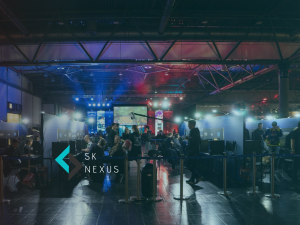In a world where televisions have dominated the market share when it comes to consumer technology, why should one bother with a monitor? It is true that most of our regularly used tech such as phones and laptops come along with a built in display; very good quality ones for that matter, then how does one go around justifying a monitor purchase?
Below are some of the reasons for which we think why monitors still stand their ground and are being constantly innovated upon. It is true that eventually all these specs will come down in price and be more accessible in consumer level technology, innovation does breed competition after all.
Professional Monitors are designed to carry out more specific tasks in mind such as 2D/3D designing, video editing, professional gaming, game/software development and more. TVs on the other hand serve a general sense of purpose and usually focus on representation of the image displayed than any other nuance. Characteristics such as input lag is also a big differentiating factor since a monitor is more likely to be accepting regular/multiple inputs from the user than a TV would. Professional work also requires objective accuracy with the workflow rather than eye popping colors that TVs are usually tuned for.
Monitor Refresh Rate
A refresh rate is the number of times your monitor updates its image each second. For example, a 60 Hz refresh rate means the display updates 60 Times per second. The 60Hz figure is what most TVs aim for as the standard media being created such as films/movies/shows are usually filmed on 24fps (frames per second). Monitor’s usually offer a much bigger range in this field due to their affinity of being associated with gaming. 144Hz was the golden number for a very long time when it comes to professional gaming until recently the number has been raised to 240Hz by many in the industry. The biggest factor with offering a higher refresh rate to take into account is the power delivery and image quality of the display. Many TVs don’t support this feature currently because of the raw power consumption it adds on to their already massive display size requirements. Only brands with massive R&D budgets have managed to offer high refresh rates with big screen sizes while not compromising any other aspect of a good monitor. When it comes to smaller sizes though, getting a high refresh rate is fairly easy these days with any ‘gaming’ monitor.
Response Time of Monitors
Sticking to gaming technology, another aspect to look out for is the response time. Response time is measured in terms of your display shifting between blacks and whites, in terms of milliseconds. It is the time taken for a monitor to shift between colors. This generally gives us the idea of how fast an input will take place on a monitor. Now TVs are usually are not bothered with this technology as they are focused towards the viewing experience of the user but since gaming is becoming more prevalent on TVs, it won’t be a surprise to see this being boasted soon. Especially with the release of new gaming consoles PlayStations 5 and Xbox Series X and Series S which market gaming at 120Hz, the response time stat just like the refresh rate stat might be the one to lookout for when choosing your next home TV. Monitors already are on the edge of this technology with 5ms response time becoming standard among many high end monitors.
Monitor Tech (LCD, LED, OLED, QLED)
The biggest reason one might invest in a monitor is future proofing. Although LED technology has become quite accessible when talking about TVs; tech such as OLED and QLED are still a far bet. These technologies cost capital and hence are much more expensive to justify on a consumer grade product. But when it comes to monitors which are usually specialized, they can take advantage of such technologies decades ahead in some cases. Now we won’t go into what each of these specify as that could be a topic of its own, but usually improvement in this aspect helps:
- Better local dimming/lighting to avoid halo effect
- Energy consumption efficiency
- Life of the product
- Color accuracy
- Bleeding effects
- Shape of the product (curved vs flat)
Flexibility
Anyone remember the 999$ Apple Pro Stand meme? The obnoxious pricing aside, people do actually expect a lot out of their monitor stands; and by extension out of their monitors. Where the TV is standardized to basically stand or hook to a wall, you will see that there are a plethora of monitor styles. Mounting monitors, vertical monitors, curved monitors, stitched together monitors, portable monitors, ultrawide monitors are there to name a few. The amount of flexibility you can customize your monitor to is just leaps ahead of a typical TV. This is another factor that is costly, maybe not 999$ costly but still nonetheless people would be surprised to find out how expensive professional mounting equipment is. This kind of flexibility is the reason we are seeing concepts like the invisible/transparent and rolling TV by LG. It will still take a long time for this to become consumer friendly but it is progress.
In conclusion
If you want to live on the edge of innovation, monitors are still easily the way to go. Innovation comes at a price hence most TVs won’t focus on many features mentioned or discussed in detail here. The truth of the matter is, the more one dives into the world of tech the higher their standard for such technology becomes; sadly most people don’t care about the greatest, they care about what is affordable. So in a world where constant innovation is demanded, we need monitors to stay relevant to introduce us to what is next and we need TVs to stay relevant to introduce the masses to what is best.
SK NEXUS is on a mission to make knowledge more accessible – around tech, around career, around business. There’s a severe gap for actionable knowledge around us – we are on a mission to fill that need.
Your contribution today can help us create more valuable content for many years to come. You can always pitch in by clicking the below.
Your continued support has supported 100+ high quality pieces of valuable content so far.

See, at the heart of it – I love solving problems for people using tech, it doesn’t get simpler than that.
I am known for constant experimentation and relentless execution.
If I have an idea, it better have a .com at the end of it within the month.
Right now – my focus is to help everyday folks of Pakistan understand tech, career, and business better with everything I do at SK NEXUS





